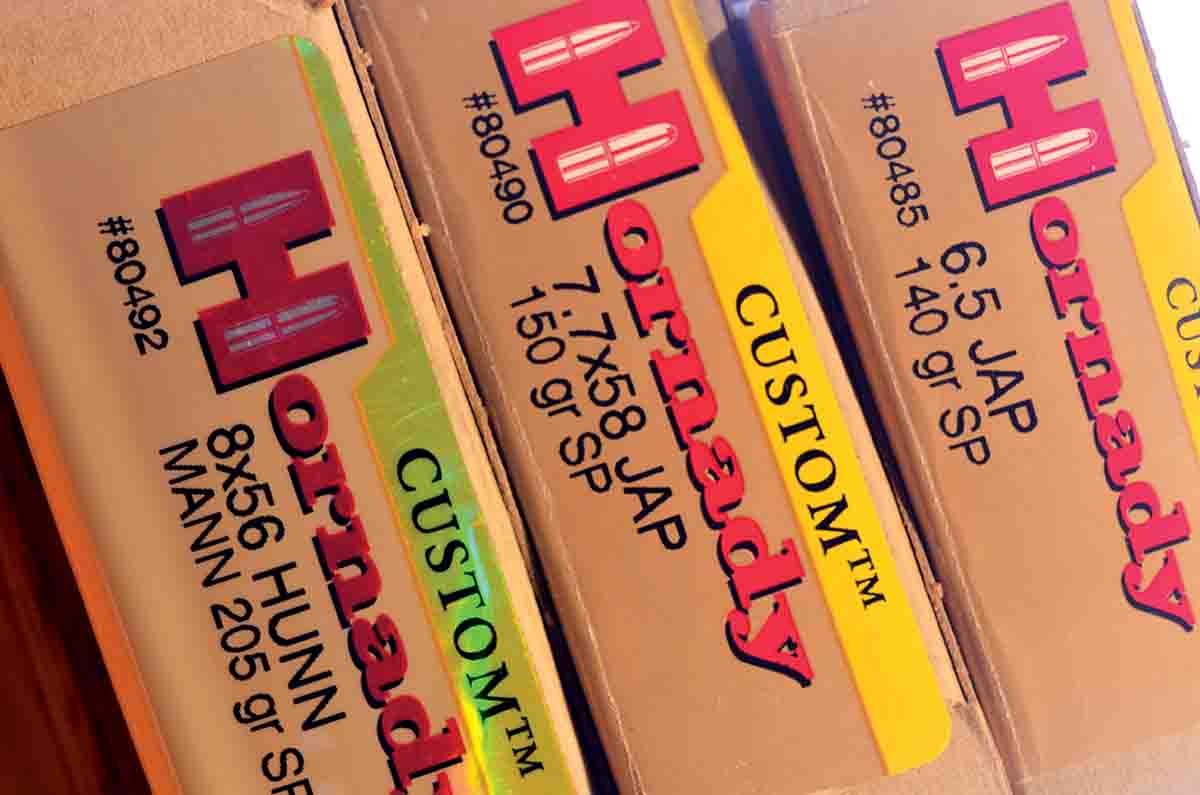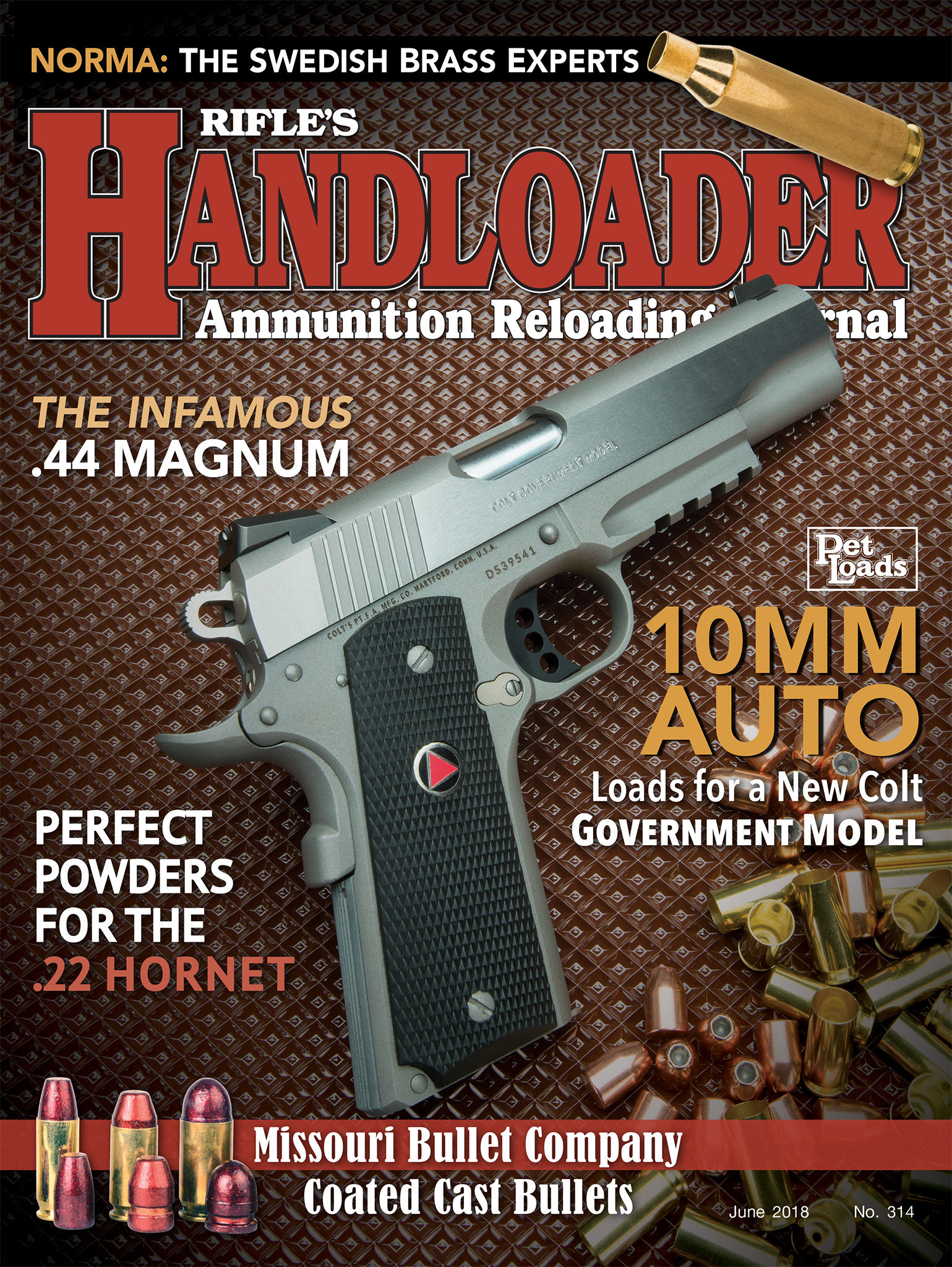In Range
The Backbone of Handloading
column By: Terry Wieland | June, 18
Over the past couple of weeks on various trips to my rifle range, I’ve run into two shooters who, in the course of conversation, let slip that they “used to handload, but gave it up.”
“Why?” I asked. One just shrugged and said it took up too much time. The other, a really serious – and I mean really serious – target shooter, said how he could get all the accuracy he could use from good factory ammunition. In fact, he added, he had

Now this guy, who rejoices in the nickname “Crazy Larry,” has told me more than once that his goal in life with one of his over-the-top, spare-no-expense, semiautomatic rifles is to put five bullets into one hole. That is one exact, perfectly round, .224-inch diameter hole, with no elongation or ragged edges to show that more than one shot has been fired.
This has been the goal of benchrest shooters since the late 1940s, when that arcane activity took hold of men’s imaginations – and since 1900 before that, when it went by the name of “table shooting.” I don’t know that anyone has ever actually done it, either in practice or competition, because that would be a .0000-inch group. At any rate, until very recently, no one in his right mind would pursue such a goal and not be a handloader. If it could be done at all (a questionable proposition in itself) it would require the ultimate in handloads.
It should be added that my acquaintance is really a one-dimensional shooter, by which I mean that, as far as I know, he doesn’t hunt deer, engage in Cowboy Action, shoot pistols or do anything except snuggle up to his beloved black guns. It seems to me, the more different activities you engage in, the more likely you are to become a handloader and stay a handloader. So many things we do are only possible if you “load your own.”
Within the last 10 years, factory ammunition has overtaken most handloads in two important areas. First, it has become more accurate overall, and match ammunition now is astonishing. Second is power. Some of today’s factory firecrackers would make old-time hotshots like P.O. Ackley turn pale. I’m glad that factory ammunition can now fill most of those two needs, because it leaves me free to pursue some of the more interesting aspects of handloading.
At one time I knew a shooter who took up handloading and became so engrossed by it that he found himself spending most of his time at his bench, and very little at the range. It got to the point where he shot solely in order to have a reason to load more ammunition. Another acquaintance read an article about developing loads for individual rifles to arrive at the ultimate in power combined with accuracy, using the optimal bullet for a particular rifle. Having done this for four or five rifles of his own, he ran out of projects and started doing it for friends. Last I heard, he was hardly shooting at all except to develop loads for other people.
Finally, there is a class of handloader who becomes a professional ballistician in everything but name. They own every instrument known to man, from dial calipers to chronographs, and hover over their loading bench like Dr. Frankenstein with a fresh corpse, working far into the night and occasionally shouting “Eureka!”
Those who are new to the game forget – or probably never knew – that today’s exceptional factory ammunition is available largely because of the efforts of these guys. Shooters who pursue pure accuracy or seek to achieve maximum ballistic efficiency with a particular cartridge or load hot, accurate ammunition for hunting, have forced ammunition makers to measure up in their own products.
Manufacturers like Winchester and Remington have a love/hate relationship with handloaders, and their components have come and gone on the market as new managers take over marketing departments and conclude that, by selling bullets and/or powder to handloaders, they are cutting their own throats. Older managers who actually spent some time around shooters knew that, in fact, the reverse was true. By competing on components with small companies like CCI (primers) or Sierra (bullets), they are proving that their own factory products can equal the specialty companies.
One thing of which I am absolutely certain is that, should handloading die out, ammunition manufacturers would breathe a sigh of relief, and their products would go into a gradual decline. It could be argued that with more manufacturers of factory ammunition than ever before, sheer competition would keep quality standards high. Perhaps, but I would rather not take the chance.
Another worry is that ammunition manufacturers are merely waiting for the opportunity to drop calibers or particular loads from their lineups. A new swarm of MBAs descends on the production line, picks out which ones are not profitable enough and discontinues them. If you are a fan of the .303 Savage, .250-3000 or various other cartridges, you know what I mean.
It’s common for a particular manufacturer to produce excellent products in one caliber but be only ho-hum in another. The good stuff might be made on a brand-new production line, while the older caliber is turned out on machines that date from the Reagan Administration. As machines wear out, uniformity becomes ragged, tolerances spread, accuracy drops off. The day finally comes when the machinery has to be replaced. If it is being used to produce a caliber with modest sales, replacing it is not worth the investment. If you shoot that particular caliber, you either handload or stop shooting.
Hornady, fortunately, has taken this practice and turned it on its head – not once but several times. The company has produced short runs of rare brass and bullets for some seriously arcane cartridges. One that springs to mind is the 8x56R Hungarian. That cartridge was used in only one rifle, to the best of my knowledge – the Mannlicher M95 straight-pull. After the dissolution of the Austro-Hungarian Empire in 1918, Hungary inherited thousands of M95s. These were rechambered and bored out from the 8x50R Austrian. The 8x56R has a larger case, but it also uses a bullet that is .328 inch rather than .318 or .323 inch.
With both cases and bullets presenting a problem, few of those perfectly good rifles could be put to use. By providing brass, bullets and loaded ammunition, Hornady solved that problem. You can still find remnants of those components for sale here and there, and they are a godsend.
A dozen years ago, the company did the same with the .450/.400 Nitro Express (3), and Ruger cooperated by chambering that interesting old cartridge in the No. 1 single shot. It is now a stock item. Hornady has also loaded 6.5 and 7.7 Arisaka. These have sometimes been custom runs for retailers, but it’s the end result that counts – they became available to everyone.
More companies should follow Hornady’s lead in this department. Shooting fads come and go (long-distance, black-powder target shooting, Cowboy Action, steel silhouettes), but handloading is one constant that binds many shooting disciplines together. The more shooters there are, the healthier the overall market.


